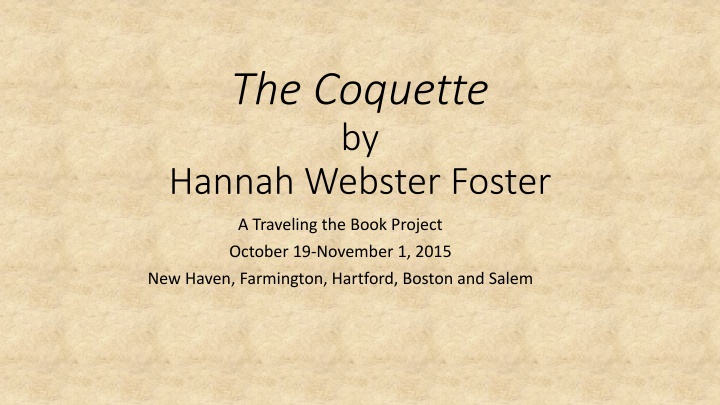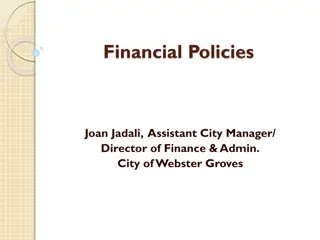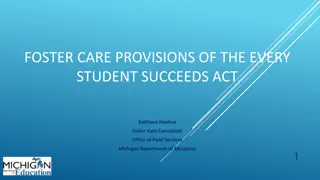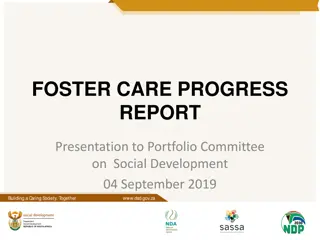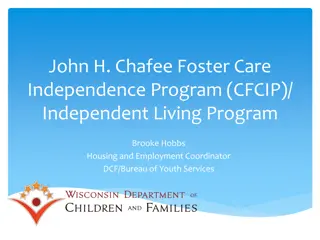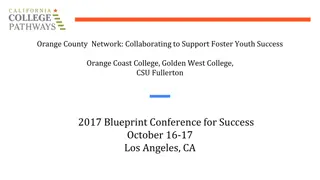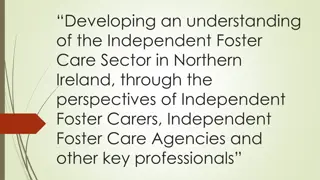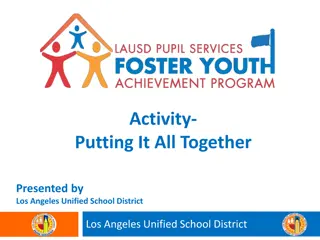The Coquette by Hannah Webster Foster - Summary and Analysis
The Coquette, a novel by Hannah Webster Foster, is based on the tragic real-life story of Elizabeth Whitman. The narrative unfolds through a series of letters chronicling Eliza Wharton's life, her romantic entanglements with Mr. Boyer and Major Sanford, and ultimately her tragic demise after being abandoned by those who professed love for her.
Download Presentation

Please find below an Image/Link to download the presentation.
The content on the website is provided AS IS for your information and personal use only. It may not be sold, licensed, or shared on other websites without obtaining consent from the author.If you encounter any issues during the download, it is possible that the publisher has removed the file from their server.
You are allowed to download the files provided on this website for personal or commercial use, subject to the condition that they are used lawfully. All files are the property of their respective owners.
The content on the website is provided AS IS for your information and personal use only. It may not be sold, licensed, or shared on other websites without obtaining consent from the author.
E N D
Presentation Transcript
The Coquette by Hannah Webster Foster A Traveling the Book Project October 19-November 1, 2015 New Haven, Farmington, Hartford, Boston and Salem
Summary of The Coquette The Coquette, published anonymously in 1789 by Hannah Webster Foster, is based on the highly publicized account of the death of Elizabeth Whitman, who, after fleeing her Hartford home following a scandalous affair with a married man, died alone in a wayside inn near Salem after giving birth to a stillborn son. Foster s fictional account of the incident is told through a series of letters penned by Whitman s alter ego, Eliza Wharton, letters to and from her friends, family and suitors, as well as their letters to each other about the unfortunate Eliza.
Summary, continued When the story begins, just as in the real-life story, Eliza is recovering from nursing an unwanted suitor, Mr. Haly, who had become critically ill while staying at her family s home in Hartford, CT. He dies and Eliza goes to stay with friends, the Richman family, in New Haven, not too far south of Hartford, where she is expecting to enjoy some pleasure after her extended isolation from society. She attends several balls, and, being pretty and vivacious, begins to attract attention. Her admirers include Mr. Boyer, a staid young man studying to be a clergyman, and the much more exciting Major Peter Sanford. Eliza s friends and family prefer the more stable Rev. J. Boyer and encourage Eliza to accept his advances, but she is more flattered by the attentions of the romantic Major Sanford.
Summary, continued Letters from Sanford to his friend Charles Deighton reveal that Sanford is pursuing Eliza more as a conquest than a bride, but Sanford is determined to win Eliza s heart. Although Eliza prefers Sanford to Boyer, she continues to be somewhat swayed by her family and friend s encouragement to accept Boyer s offer of marriage, but she holds out, expressing her desire to stay free and enjoy the parties and flattering attentions of men like Peter Sanford, whom some in society have branded as a libertine and a rogue. In his letters, Rev. Boyer relates an increasing frustration with Eliza for not giving him an answer despite his frequent visits to the house and the encouragement of her mother. On one of these visits he finds Eliza alone in the garden with Peter Sanford and is so offended that he leaves, goes back to New Hampshire and strives to forget Eliza, which he does, and becomes engaged to another.
Summary, continued At the same time, Sanford, although he is still attracted to Eliza, marries another, much wealthier woman but still holds out hope that he can have a dalliance with Eliza, who is eventually seduced by his charms. Through the letters of Eliza s closest friends, we find that she has fled to a village outside of Salem, Massachusetts, called Danvers (now Peabody), where she checks into an inn, gives birth to a stillborn child and dies soon after. Forsaken by the men who said they loved her and ostracized by her own community, Eliza is buried by the townspeople in a local cemetery far from home.
Hannah Webster Foster and Major Events in U.S. History 1758-1840 1824-1828 The Coquette reaches the height of popularity; reprinted 8 times 1762 Her mother dies and Foster is sent to a boarding school 1798 Publishes The Boarding School 1758 Hannah Foster born in Salisbury, MA 1770 s Foster moves to Boston and begins writing political articles for Boston newspapers 1797 Anonymously publishes The Coquette 1796-Bears the last of five surviving children- 1840 Foster dies in Montreal, Quebec 1786 Bears the first of six children 1785 Marries Rev. John Foster 1783 Treaty of Paris brings Revolutionary war to an end 1804 Lewis and Clark begin their expedition 1789 George Washington becomes first President of the United States 1796 John Adams becomes second President of the United States 1773 Boston Tea Party 1765 Stamp Act and Quartering Act continue to oppress colonists 1776 United States Declaration of Independence 1763 French and Indian war ends 1812 War of 1812 with Britain 1788 Constitution ratified 1770 Boston Massacre
Day One To begin our trip, my husband and I travel to Boston, where we will pick up our rental car and drive the two hours to Poquetanuck, Connecticut, on the outskirts of Preston. This will be a good home base for our first adventures as it is close to both New Haven and Hartford where most of the letters in the epistolary novel, The Coquette, were penned by Eliza Wharton to and from her friend Lucy Sumner. The inn is located in Poquetanuck Village, which dates back to the 18th Century, as does our inn, Captain Grant s 1754. According to the website, the inn is on the National Registry of Historic Places and is a great reminder of Colonial America. Our room, with antique furniture and a fireplace is called, what else, the Elizabeth Room!
Day Two We ll breakfast on ham and pancakes served with the house s special rhubarb compote, all which might have been eaten by upper class families like the Richmans, with whom Eliza was staying in New Haven as the novel begins. Then, we ll drive along the coast to New Haven. We will have a full morning of visiting the campus of Yale and taking in the most historic buildings on campus, some standing at the time the real life Eliza Wharton, Elizabeth Whitman, lived. Eliza s first suitor is a theology student at Yale. Lunch will be savory pies and beer at the Ordinary, in one of the oldest buildings in New Haven, dating back to the 17th Century, before visiting the Grove Street Cemetery where Pierrepont Edwards, one of the possible models for Eliza s seducer Peter Sanford, is buried. One of the first presidents of Yale, Timothy Dwight is also buried there and considered another candidate. At the very least, he is believed to have covered up the scandal to help prevent the embarrassment of several prominent Hartford and New Haven families.
Day Three Farmington We ll have another great breakfast at Captain Grant s, then pack up and head to our next home away from home in Farmington, just south of Hartford, Connecticut s capitol, and the home of Elizabeth Whitman, the real life Eliza Wharton. We ve chosen a delightful four bedroom restored 1792 farmhouse in Farmington. We ll get settled into our vacation home and then explore the town as well as get some groceries for our colonial-inspired meals based on recipes from the first American cookbook, American Cookery, written by Amelia Simmons and published in 1798. Tonight we ll have roast beef, potatoes, carrots and onions with classic apple pie, made from Connecticut apples, for dessert. One place we will be sure to visit in Farmington on our walk around town is the First Church of Christ on Main Street. Built in 1771, the church is known for being the house of worship for the former slaves of the Amistad rebellion while they were fighting for their freedom in US courts in the Mid- Nineteenth Century.
Day Four Carriage Ride through the Countryside In The Coquette, the characters often talk in their letters about going out riding. For the upper class women like Eliza Wharton, that meant carriage riding, not saddle riding, so today we plan to travel to nearby Terryville, Connecticut, and enjoy a carriage ride through the beautiful countryside. Because we are going in October, there should be full fall foliage to enjoy. After our ride we ll enjoy a pub meal at the Black Rock Tavern in Thomaston, where we ll have a good Connecticut wheat beer Allagash White--classic New England Clam Chowder and Maryland Crab Cakes, all common food and drink for early Americans who lived near the coast. Then, we ll head back to our beautiful house in Farmington for a quiet evening by the fire, reading The Coquette or Foster s other novel, The Boarding School.
Day Five Stanley Whitman House and Today we visit one of the oldest structures in the town, the Stanley- Whitman House, now a museum. The Whitmans referred to here may have been related to the Whitmans of Hartford, Elizabeth Whitman s family, but the evidence is not clear. We ll tour the house, a National Historic Landmark built around 1720, visit the Living History Center and stroll around the gardens, preserved by the Farmington Historical Society to be like the gardens during Elizabeth Whitman s day. In the gardens we can imagine the climactic scene in The Coquette, when Eliza s suitor, Rev. Boyer, finds Eliza and the libertine Peter Sanford, having a clandestine meeting in the garden. In the evening, we hope to attend one of the country dances sometimes held nearby to benefit the Stanley-Whitman House. The Coquette makes frequent references to dances and balls, a common form of entertainment among wealthy early Americans.
Day Six Hartford Today we ll spend in Hartford, where Elizabeth Whitman and the fictional Eliza Wharton lived. It is only a short drive from our farmhouse home away from home. Our first stop will be the Old State House in the heart of Hartford. It is one of the oldest government buildings in the United States. Then we ll get some fresh fruits and vegetables at the Farmer s Market on the grounds of the Statehouse. After walking around the downtown area, we ll have lunch at The Half Door. We ll have traditional colonial dishes served there like Shepherd s Pie or Chicken Pot Pie, washed down with a good Irish beer like Smithwycks or Guinness. Next, we ll head to the historic district of Wethersfield to visit the Webb- Deane-Stevens Museum, where we can see some extraordinary 17th and 18th Century buildings, furnishings, artwork and crafts that will take us back to the time of Elizabeth Whitman and Eliza Wharton.
Day Seven Hartford Again We ll have a nice breakfast, featuring some of our fresh fruits and vegetables, purchased at the Statehouse Farmer s Market and prepared in our own little farmhouse kitchen, before heading back into Hartford for a special Sunday. We will attend church at South Church, once called the Second Congregational Church of Hartford, pastored from 1732-1777 by Elnathan Whitman, the father of Elizabeth Whitman. The actual church building no longer exists, but the congregation is one of the oldest in America. After a quick lunch, we ll attend a matinee performance of Shakespeare s Hamlet at the Hartford Stage Company. Theater was another popular pastime of wealthy early Americans and mentioned numerous times in The Coquette. On our way back to Farmington, we ll stop at the Connecticut Valley Winery to pick up some Dolce Vita white wine as well as some salmon filets, scallops, red potatoes and asparagus for our final feast in our lovely farmhouse in Farmington.
Day Eight--Boston Today we travel to Boston. It is important in the novel because Eliza s friend, Lucy Sumner, invites Eliza there in an attempt to distract Eliza from the advances of Peter Sanford and allow her to spend more time with the more acceptable suitor, Rev. Boyer. Unfortunately, the plans go awry when Eliza argues with Rev. Boyer, who disapproves of Eliza s frequent social activities, including the theater and the circus, as well as her many clothes shopping trips. Even worse, Eliza sees Peter Sanford at the theater, and he continues his attentions despite Lucy s efforts to keep them apart. Boston is also an important stop on our travels because Hannah Webster Foster lived most of her life in a suburb of Boston called Brighton. Also, Foster wrote political essays for Boston newspapers. We have chosen a small apartment in Brighton, where Hannah Webster Foster lived. We ll also be close to Boston with easy access to all the sights. We ll have supper at Porter Belly s Pub right down the street, which has great early American fare like cottage pie and roasted turkey in an old town atmosphere.
Day Nine Morning There s nice European bakery and caf down the street where we ll have breakfast. Early Americans loved drink coffee and eat baked goods, so it seems appropriate. After breakfast we will explore the town and places important to Hannah Webster Foster. Most of the original buildings are no longer standing or have been so altered that they are unrecognizable, but we have specific addresses and can use our imagination as well as maps from the Brighton- Allston Historical Society to aid us in our tour. We ll look for the First Parish Church location, where Foster s husband John served most of his life and the parsonage at 10 Academy Hill Road, where Foster wrote The Coquette. We ll also look for the Foster s first residence on 16-17 Peaceable Street the Ebenezer-Smith House that is still standing and is said to be one of the oldest buildings in Brighton. Our final stop will be 181 Foster Street where a portion of the infamous mansion the Foster s had built still stands. The residence caused a scandal as many felt a clergyman should not live in such an opulent place. Then back to our apartment for lunch.
Day Nine Afternoon We will be excited to visit the Old North Church and the Printing Office of Edes and Gill. The Church is famous for being the place where Paul Revere is said to have signaled that the British were coming. The Printing Office of Edes and Gill is particularly relevant to our tour because it houses an Eighteenth Century printing press like the one on which The Coquette and Foster s other writings were printed. We will listen to a talk about printing during the time and watch a demonstration of the press as well as visit the museum, gift shop, and of course, the famous chocolate shop. Cocoa is mentioned several times in The Coquette and was a popular beverage among those in the upper class. For supper we re going to walk a bit in the historic district around the North Church, cross the Charles River to Atwood s Tavern, where we ll feast on Roasted Bell and Evans Chicken, Braised Beef, and Apple Tarts for dessert. We ll wash it all down with some Jack s Addy Smoke and Dagger Smoked Dark Lager from, where else, Farmington! We hope to hear some live music too, maybe some Irish or Bluegrass.
Day Ten Heart of Boston When Eliza Wharton went to Boston with her friend Lucy Sumner, the two young women spent many hours shopping, something which her conservative suitor, Mr. Boyer, did not like at all, so we thought it would be fitting to spend part of our day at Faneuil Hall, a Boston market center since 1742! We will take a tour of the hall itself and peruse the shops in the pedestrian area around the hall. Through October there are all sorts of street performers offering entertainment just like in Hannah Foster s day. Lunch will be Fish and Chips with Sam Adams beer in the oldest tavern in America The Bell in Hand adjacent to the hall. After lunch we will walk and see some of the historic sites along the Freedom Trail, of which Faneuil Hall and The Bell in Hand are a part. Education was an important concern to Foster. She often wrote about it in her political columns for newspapers in Boston, so along the Freedom Trail, we will be sure to visit the site of the first Public School in America, established by the Puritans in 1653. We ll see the Benjamin Franklin statue that stands in the front and take a self-guided tour.
Day Eleven Salem After a hearty breakfast of ham and eggs, plus a baked treat from the bakery down the street, we ll head north to Salem, the perfect place to be for Halloween festivities, but also important to our literary tour for several reasons, including Nathanial Hawthorne. We have chosen, therefore, the Hawthorne Hotel in downtown Salem as our last accommodation. Although the inn was not here in Foster s day, its rooms are furnished in colonial style and will put us right in the thick of the Haunted Salem activities that take place all through October in the spookiest city in America, famous for the Salem Witch Trials of the 17th Century. After we settle in our hotel, we ll have lunch at the hotel in its cozy tavern and head to the Salem Maritime Historic Site and learn about sailing in Foster s day. We can also imagine what might have happened to Peter Sanford, who says in his last letter to his friend Charles Deighton that he will flee the area now that Eliza has died, having lost everything. The highlight of the day will be touring the Salem Custom House where Nathanial Hawthorne worked when he wrote The Scarlet Letter, his magnum opus. Some scholars believe that Hawthorne based his famous novel of sin, confession and reclamation on the tragic tales of Elizabeth Whitman and Eliza Wharton.
Day Twelve Halloween Ball We ll sleep in late and rest up for the big Halloween Ball in the hotel s ballroom that night. Eliza Wharton loved balls, dinners and the theater more than anything. Her active social life is the main reason she just couldn t bring herself to settle down and live a quiet life as a clergyman s wife. I love the theater probably as much as Eliza, so I will have great fun dressing up and attending the Halloween Ball as Eliza Wharton. My husband will be the dashing libertine Peter Sanford, of course.
Our last full day will be on Halloween, and we will be in the best place in the world to enjoy the day. Day Thirteen Halloween! To begin our last day, we will take a restful lighthouse cruise along the coast. We hope to sail far enough north to see the lighthouse of Salisbury, where most scholars believe Hannah Webster Foster was born. Then we ll have lunch at Red s Sandwich Shop in Salem, located in a building that dates back to the 1700 s and is like the one to which Elizabeth Whitman fled after finding out that she was pregnant. The small community outside of Salem, then called Danvers, has been renamed Peabody. By all accounts, Whitman was well-liked and respected by the people of Peabody. They befriended her when she first came to the inn, cared for her during her illness after giving birth to her still-born child and arranged for her burial in the Peabody Cemetery. We ll end the day in a somber way by visiting the actual grave of Elizabeth Whitman in the Peabody Cemetery. The original gravestone has been chipped away over the years by vandals who wanted to have souvenirs of the scandalous affair that dominated the headlines back in Foster s day. A local historical society has replaced the original stone with a new one that is almost identical to the headstone included in The Coquette. For our final feast we will return to the Hawthorne Hotel and enjoy the quintessential American meal of Roasted Stuffed Turkey at the hotel s famous restaurant Nathanial s. With good Massachusetts brown ale, we ll raise our spirits as we raise our glasses to The Coquette, the first novel written by an American woman, that inspired one of the greatest American novels ever written Nathanial Hawthorne s The Scarlet Letter. What could be more literary than that!
Day Fourteen Fond Farewell Today we will bid a fond farewell to New England. We ll pack up, and after a big New England breakfast, travel along the coast to Boston Logan International Airport via Marblehead. We ll even stop once to walk along the beach and talk about our adventures. It will have been somewhat bittersweet to explore the lives of Elizabeth Whitman and Hannah Webster Foster, but it will help me appreciate my life as a 21st Century woman writer and lead me to realize how blessed I am to have found a man who has loved and supported me for 26 years.
BudgetTwo People $5345 Total with $4655 remaining Transportation Car rental--$800 Gas $27 Boston 7-Day Transit Pass--$38 Accommodations Captain Grant s, 1754--$258 Farmington Farmhouse--$1,400 Brighton Apartment $480 Hawthorne Hotel--$513 Food Special Meals--$387 Groceries--$280 Miscellaneous $200 Attractions and Activities Tour of Yale University Free Grove Street Cemetery Tour Free Carriage Ride with Picnic $200 Stanley Whitman House--$8 Country Dance--$50 Old State House--$12 Webb-Deane-Stevens Museum--$20 South Church Service Donation--$20 Hamlet at Hartford Stage Co.--$110 Old North Church Tour--$12 Printing Office Free Shopping at Faneuil Hall--$300 Halloween Ball--$180 Salem Marine Museum Free Salem Custom House Free Lighthouse Cruise--$50
